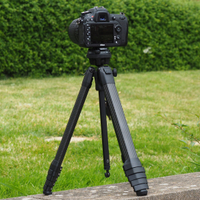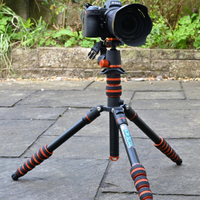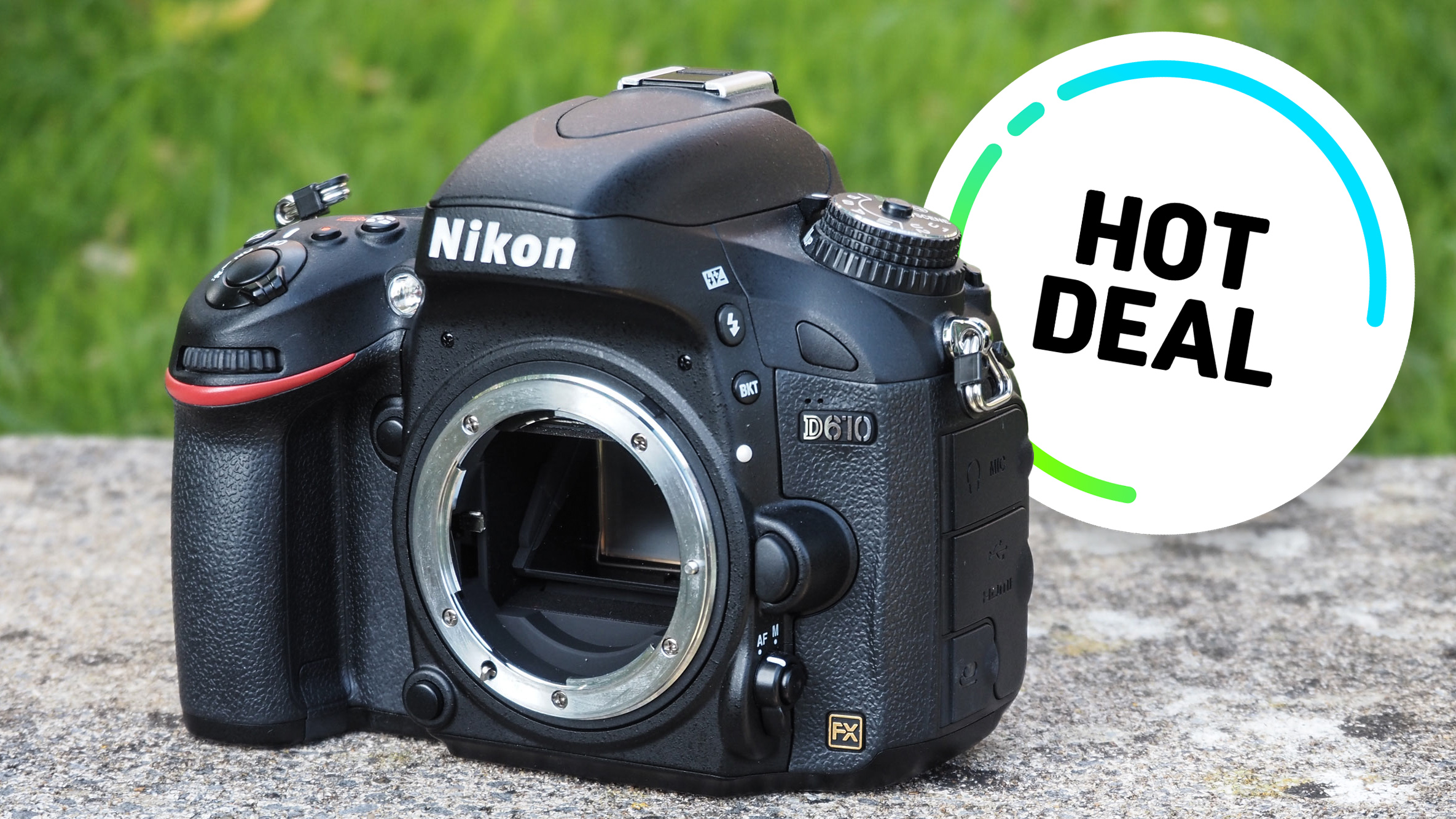Digital Camera World Verdict
I like how the Benro Cyanbird Carbon Tripod + FS30 kit bucks the trend of travel tripods. It doesn’t have swing-up legs for smaller stowage, which makes it quicker to set up and fold down. It’s impressively rigid for such a lightweight tripod and takes up little storage space, but only reaches a modest maximum height. The FS30 ball head is particularly good with easy leveling for panning, but the carbon kit is unsurprisingly pricier than the ‘hybrid’ carbon and aluminum version.
Pros
- +
Small stowage size
- +
Lightweight but rigid
- +
Clever head
- +
Easy leveling for panning
Cons
- -
Modest maximum height
- -
No monopod conversion
- -
Pricier than ‘hybrid’ version
Why you can trust Digital Camera World
I’ve been really impressed by some of Benro’s sturdy, full-sized tripods, which are some of the best tripods for photographers. Benro also makes some of the best carbon tripods, best tripods for videographers and best travel tripods, the last of these including the Benro Rhino 05C VX20.
I also really like the Benro Cyanbird Hybrid kit, which combines carbon fiber and aluminum leg sections, and comes complete with an N00P ball head. Unlike most travel tripods, it doesn’t rely on swing-up legs to reduce the stowage size. Its space-saving design is more akin to the Peak Design Travel Tripod, with leg sections that have a curved profile to wrap snugly around the center column, which itself has a triangular profile. That cuts down on any wasted space.
The kit I’m reviewing here comprises the fully carbon fiber Cyanbird legs with the FS30 ball head, the latter working well for both video and stills.
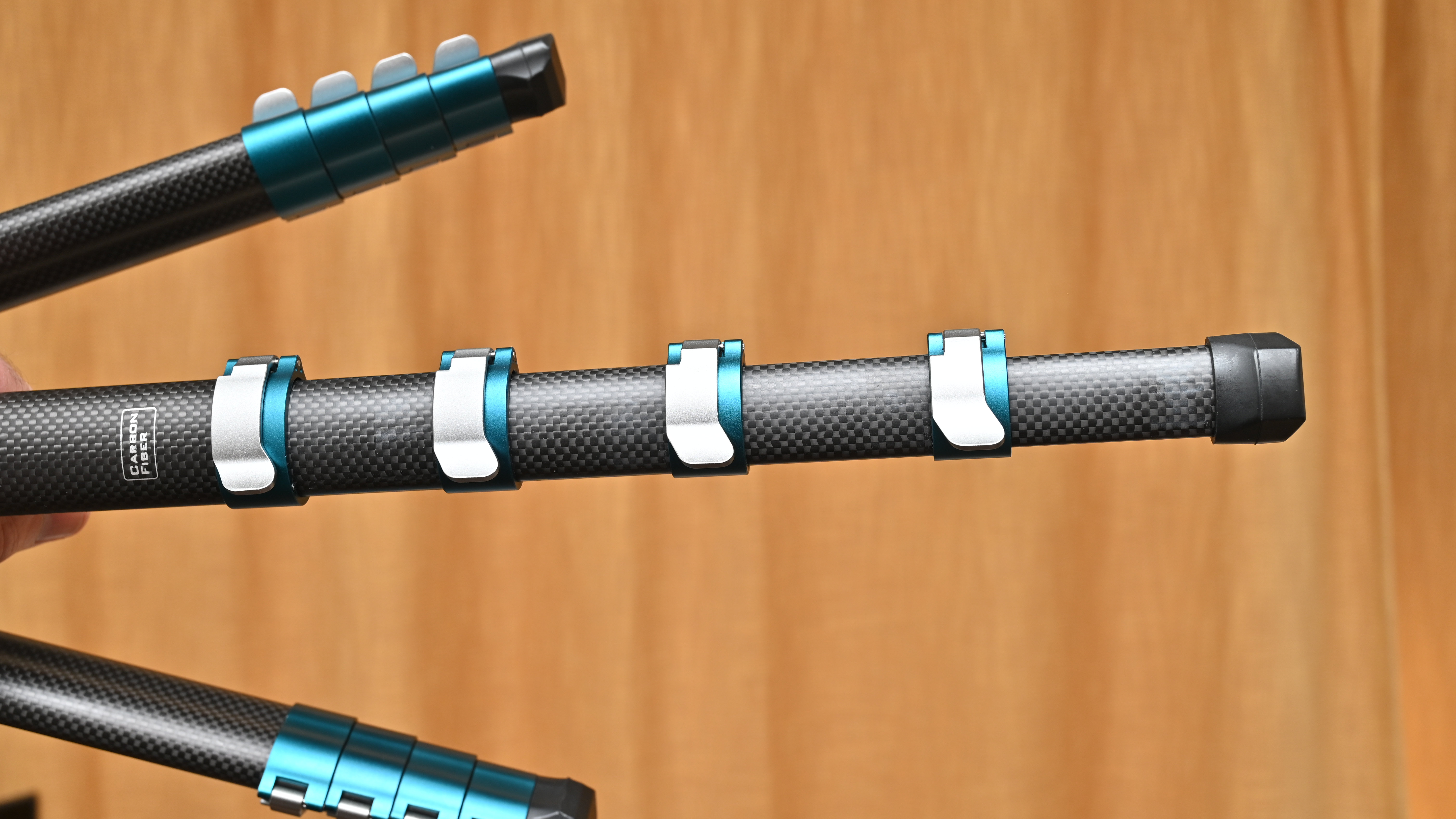
Benro Cyanbird FS30: Specifications
Material | Carbon Fiber |
Folded height | 45.5cm / 17.9" |
Maximum operating height | 150cm / 59" |
Minimum operating height | 17cm / 6.7" |
Weight | 0.99kg / 2.2lb |
Load rating | 4.5kg / 10lb |
Sections per leg/center column | 5 / 2 |
Maximum leg section diameter | 34.5 x 19.5mm |
Locking leg angles | 3 |
Case/bag included | Padded roll-up case |
Benro Cyanbird FS30: Price
You generally have to pay top dollar for a carbon fiber tripod kit, and this one’s no exception. With its full set of carbon leg sections and smart FS30 head, the kit costs $300 / £300 / AU$700.
To my mind, the clever design and attention to detail make the kit worth the money, but it’s worth bearing in mind that the Benro Cyanbird ‘hybrid’ kit that has carbon fiber outer leg sections and aluminum inners, and comes with the N00P ball head, is rather less expensive in some world regions. That one costs $190 / £235 / AU$599 and is only 60g / 2oz heavier.
For further comparison, the carbon fiber version of the Peak Design Travel Tripod is much more expensive at $599 / £599 / AU$1,170, so twice the price of the Benro in the USA and UK.
Benro Cyanbird FS30: Design & Handling
Aiming for small stowage and a decent maximum operating height, the Cyanbird has 5-section legs. Unlike the ‘hybrid’ version, this fully carbon kit uses carbon fiber for all of the leg sections, instead of switching to aluminum for the inner four sections of each leg. However, if you thought the fully carbon build would result in a major weight saving, you’ll have to think again as the difference is negligible.
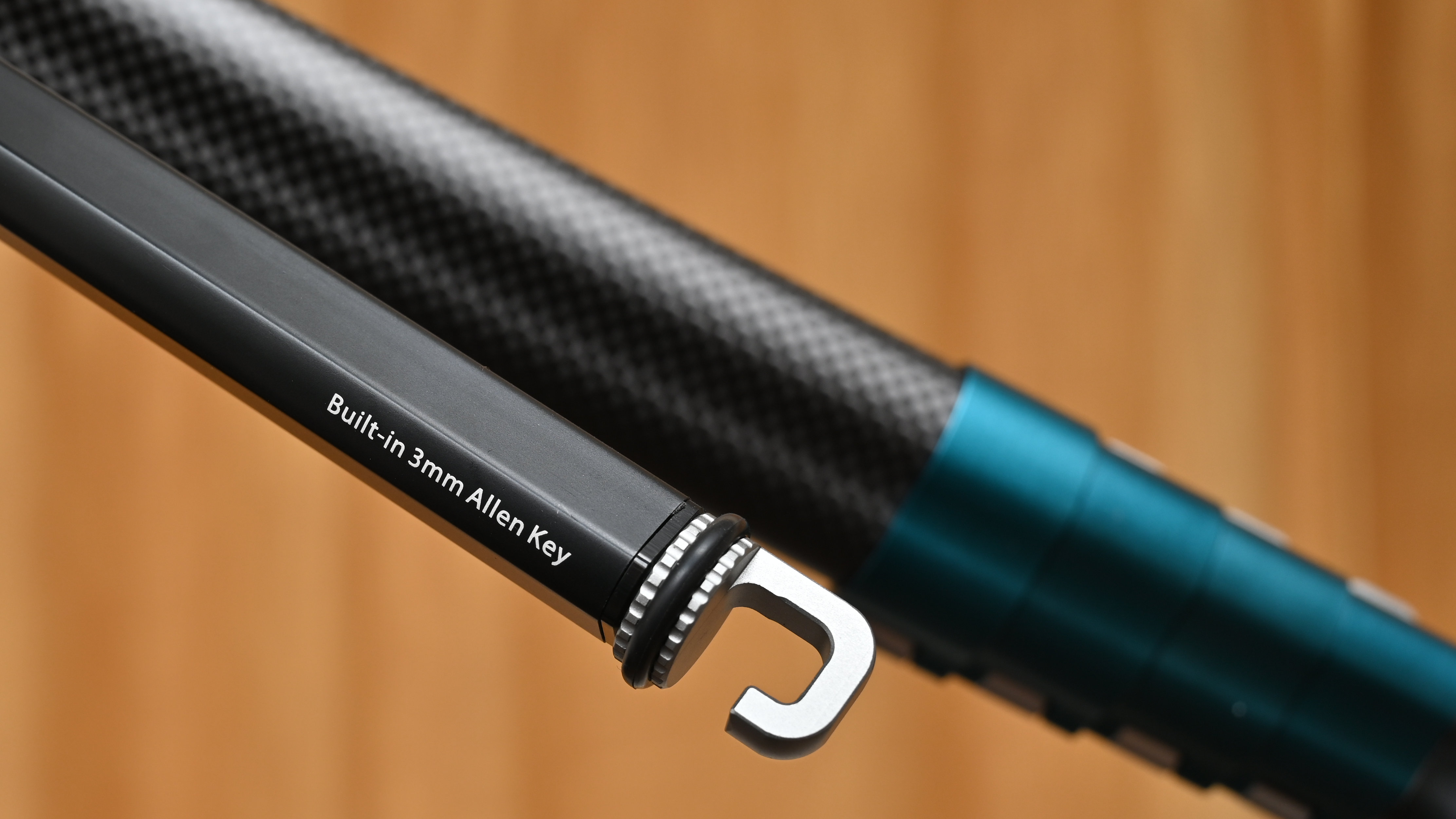
One of the standout, space-saving features of the Cyanbird is that it has a curved profile for its leg sections. That’s more difficult and expensive to manufacture than regular round-shaped legs but the payoff is that the legs wrap tightly around the center column when you fold down the tripod, so it takes up less stowage space. Measuring 45.5cm / 17.9" in length when folded, it’s a little longer than some tripods that have swing-up legs, like the 3 Legged Thing Punks Corey 2.0, which fold down to 36.1cm (14.2"). Even so, the Cyanbird is still small enough to fit inside a photo backpack or daypack, rather than needing to be strapped to the outside. That can be a real bonus for travelling. And if you do carry it separately, it comes complete with roll-up padded soft case, which includes additional pockets for other gadgets.
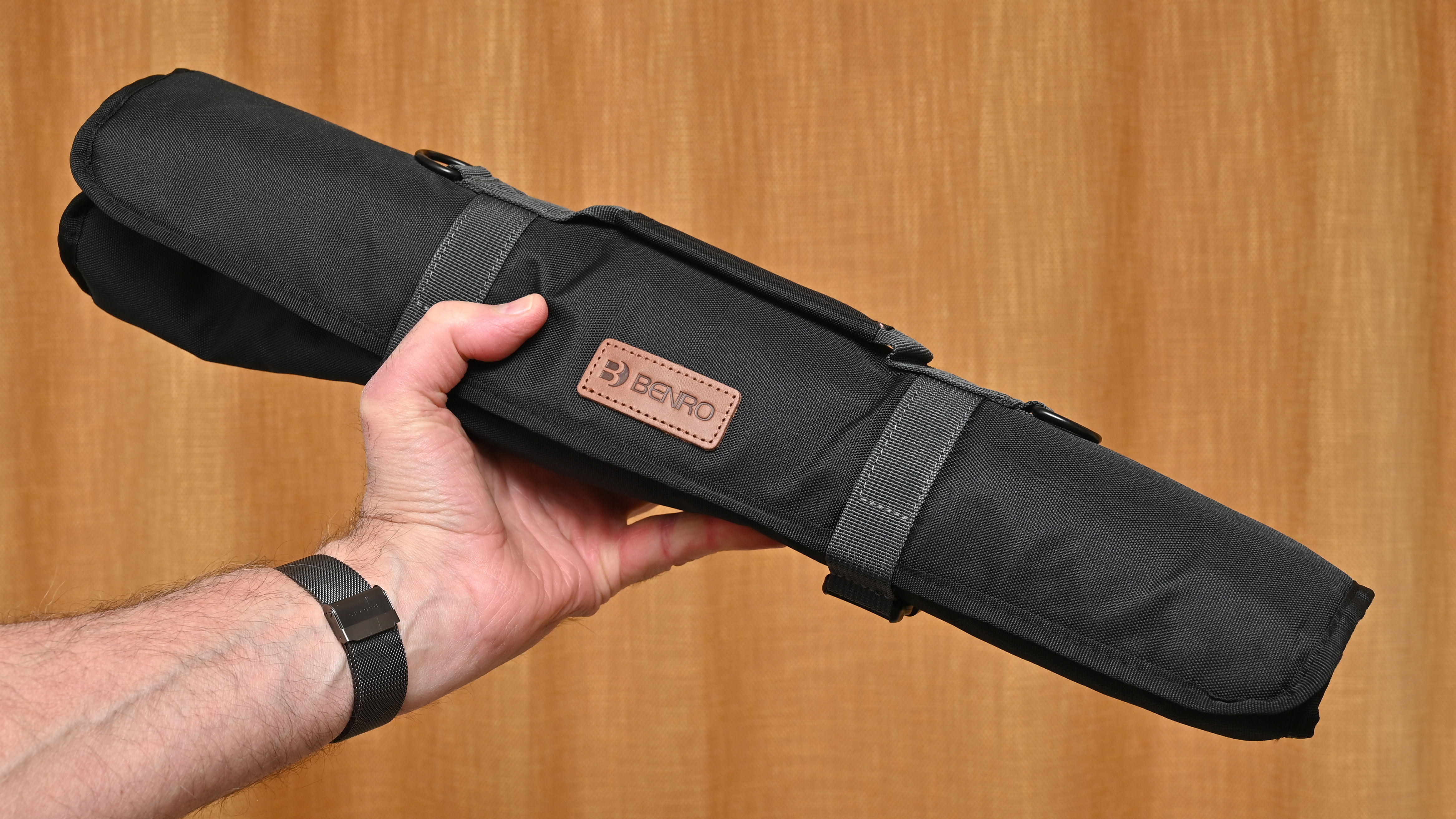
Accentuating the slim leg design, the flip-locks for each section have particularly low-profile levers, and they’re nicely finished in durable aluminum. When it comes to all of the main castings for the tripod, magnesium alloy is used throughout, to keep the weight down while maximizing the strength and stability. They’re finished in a gorgeous shade of ocean blue, adding to the ‘cyan’ look of the tripod, as well as the head. Typical of many tripods great and small, three alternative locking leg angles are available, which can be useful on uneven terrain or when you’re working around obstacles, as well as for low-level shooting.
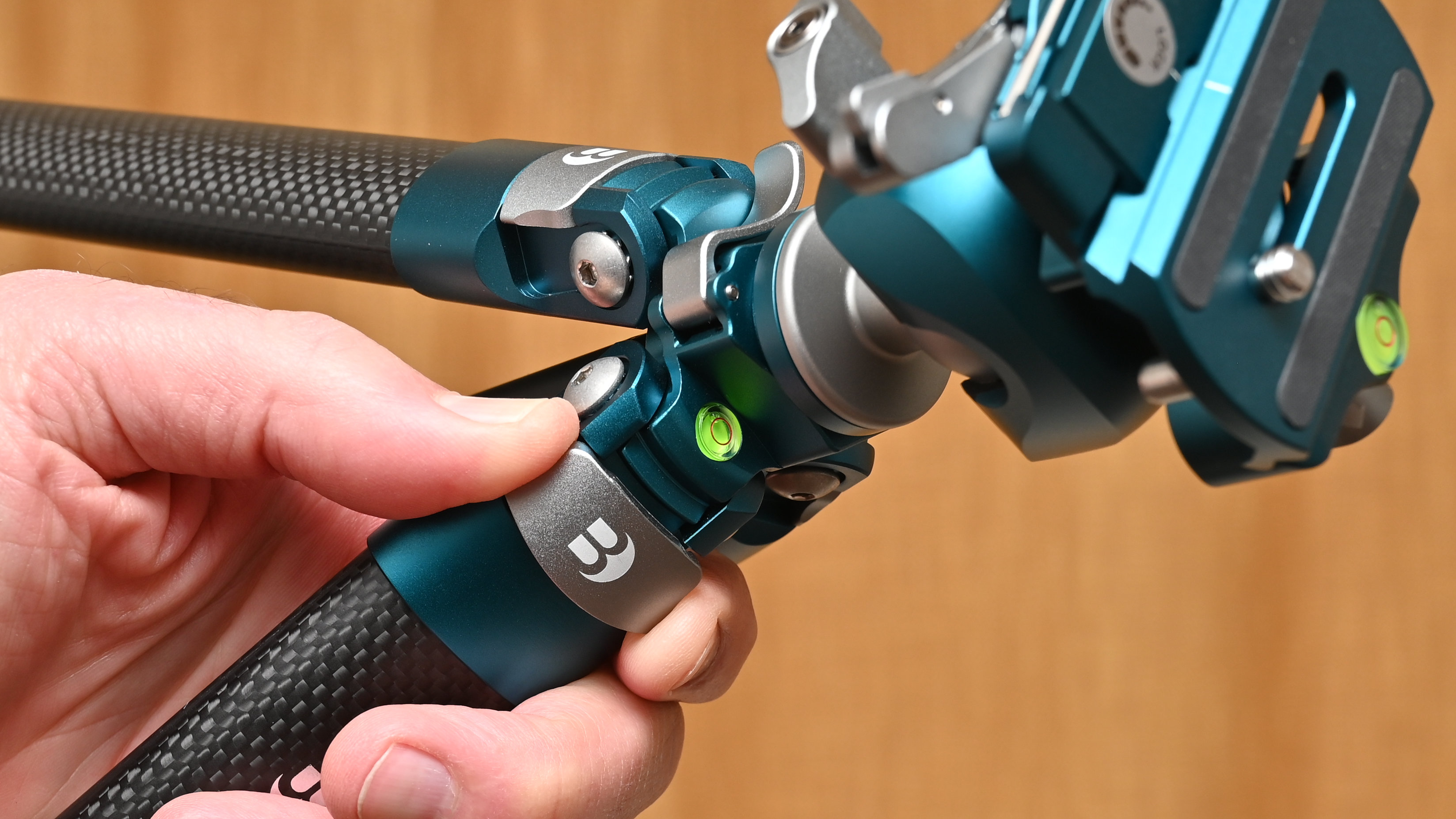
Build quality looks and feels very good, and the tripod is reassuringly rigid for such a lightweight affair. I’d expect nothing less from Benro, after testing and using many of its tripods over the last couple of decades (the company was founded back in 1996). Despite having five sections in each leg, I found the Cyanbird quicker and easier to set up and fold away than most travel tripods that have swing-up legs.
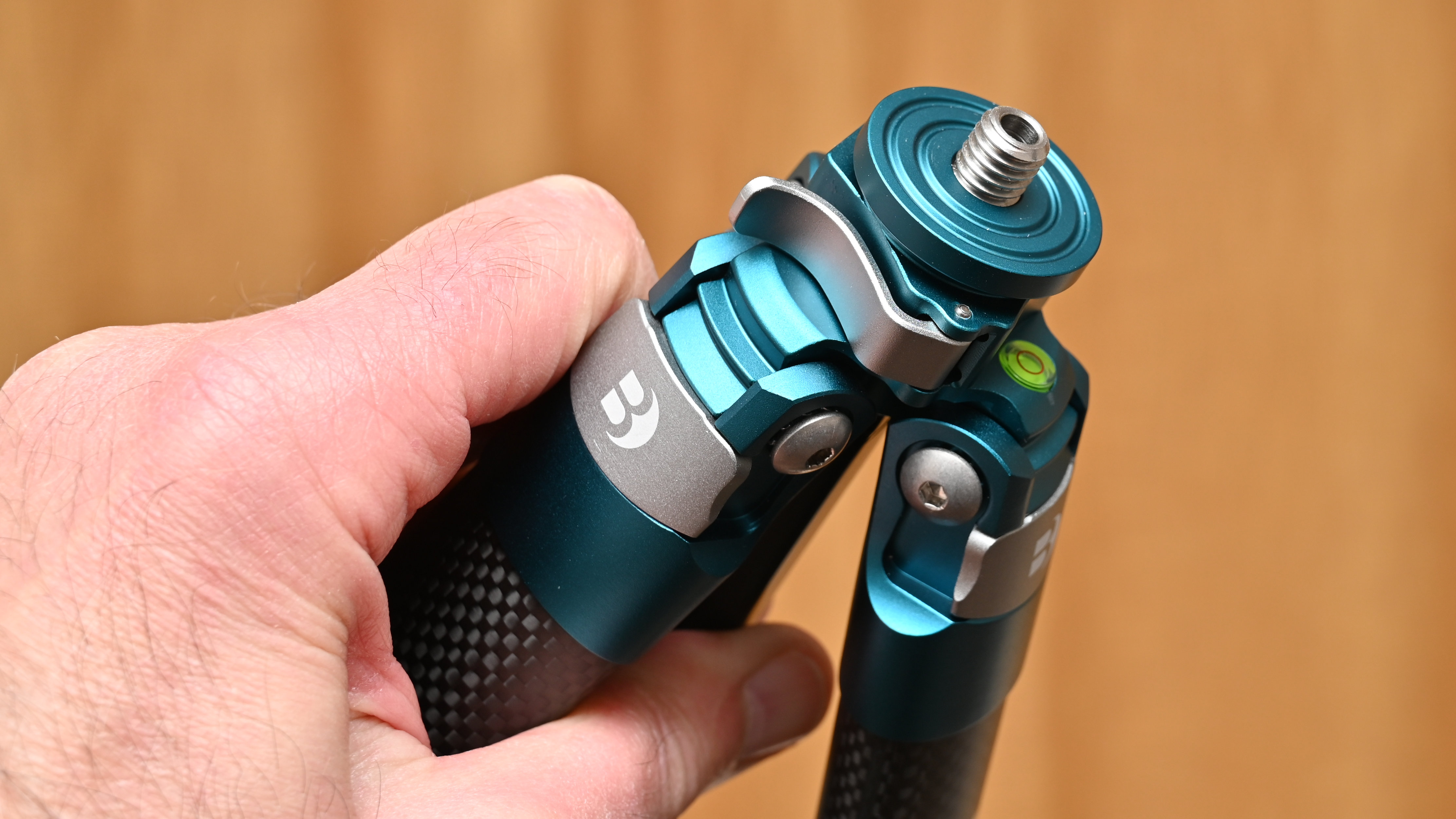
Another recent trend for travel tripods is that some have a two-section center column, which can extend the maximum operating height without affecting the folded length. The Cyanbird doesn’t follow suit, but nevertheless has a two-section center column. In this case, you can remove the lower section to enable really low-level shooting with the legs at their widest angle, right down to 17cm / 6.7".
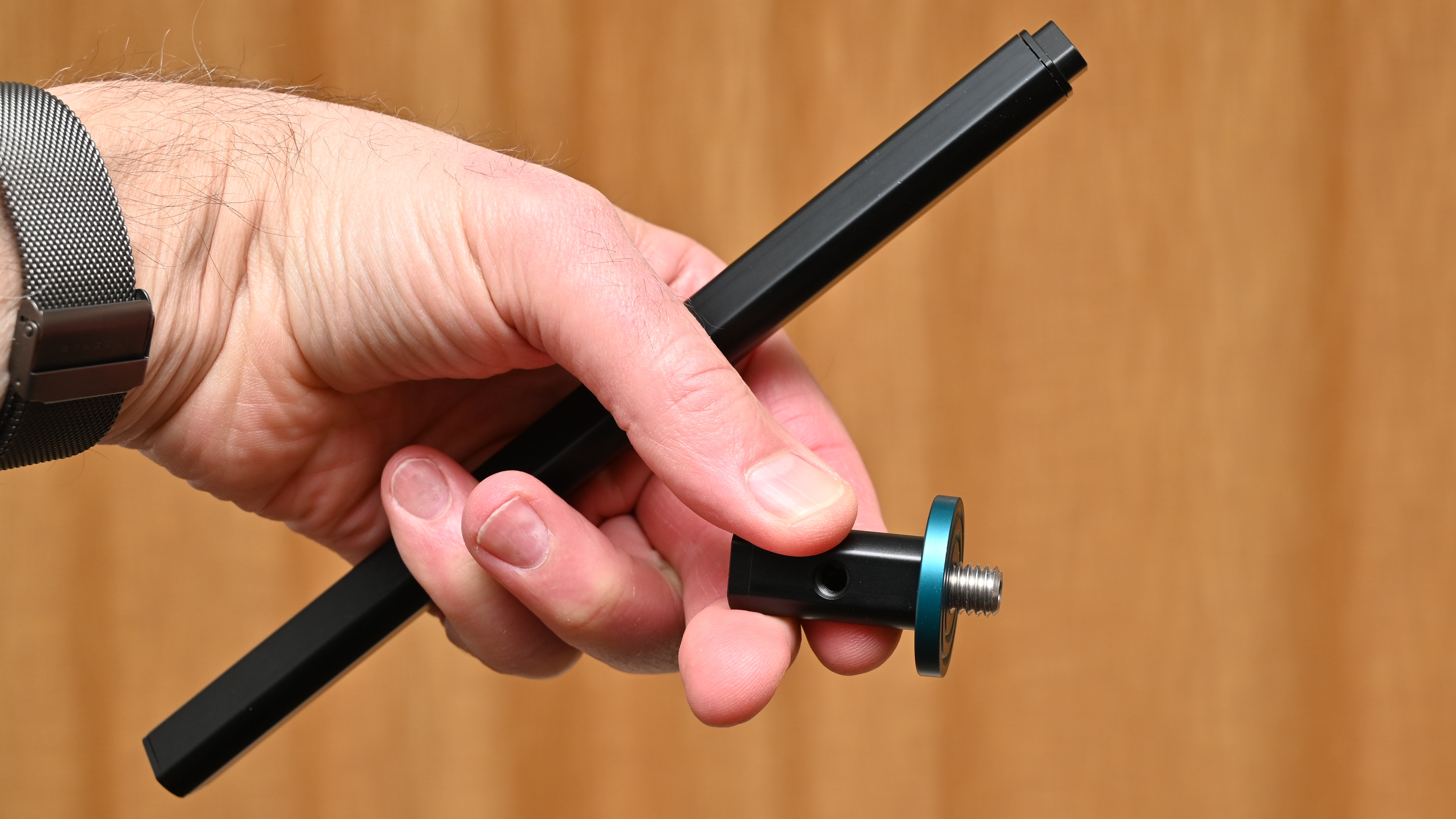
The spider at the top of the legs features a standard ¼” threaded socket which you can use for attaching accessories like an extension arm for holding a microphone or LED panel. A further two ¼” sockets are featured in the top section of the center column. Down below, the feet are based on rubber pads that are designed to give a sturdy footing on any surface.
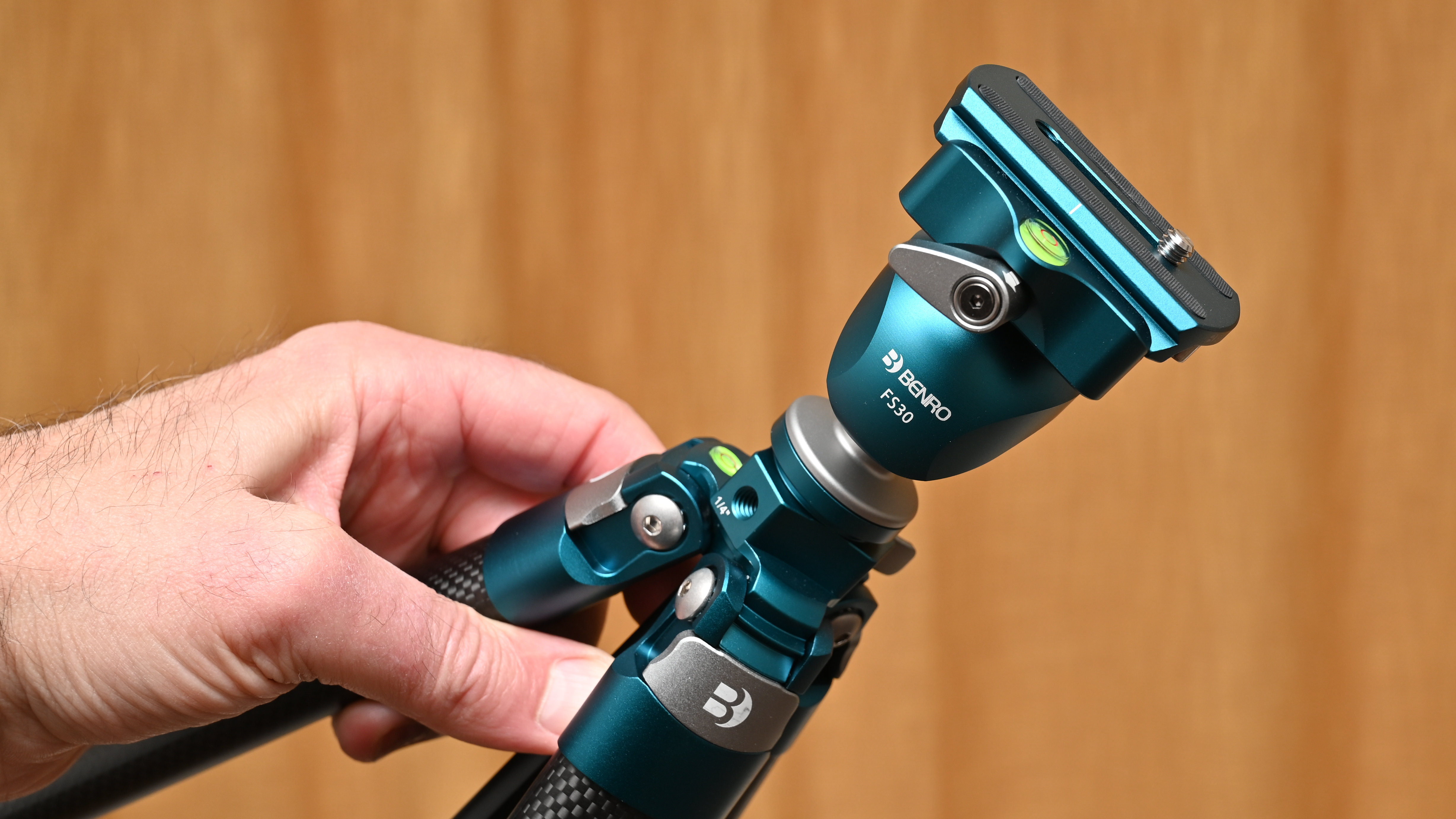
Naturally, when you’re buying a complete tripod kit, the head is every bit as important as the legs. I really like the design of the FS30 head in this kit. It has all of the convenience of any ball head, a single locking lever enabling a full range of movement along with speed and ease of use. It also has a generously long Arca Swiss profile quick-release plate that can be tightened with a flat blade or coin, a hex key or the attached D-ring. The locking lever for the quick-release plate on the tripod head feels very secure, complete with a safety catch.
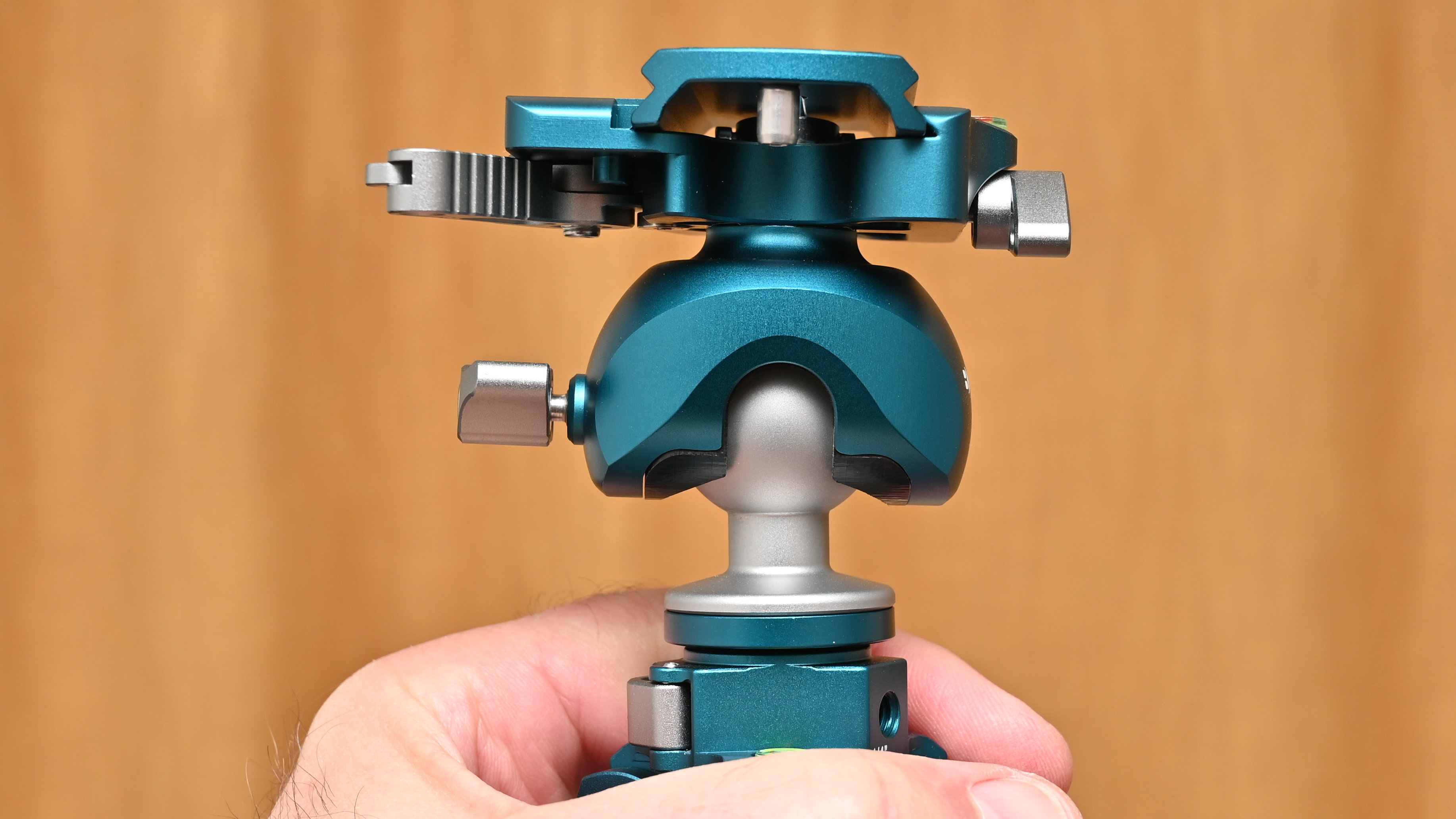
A bubble level is featured on the tripod legs and there’s another one on the ball head, which can help with leveling the camera. As you might know, however, you usually need to level the legs instead of compensating for any slant by adjusting the head, if you want to indulge in panning when shooting video or taking a sequence of stills to stitch into a panorama. One thing I really like about the FS30 is that the panning section is at the top of the head instead of at the base. That means that you actually can just level the head and not worry about levelling the legs, and pan away to your heart’s content.
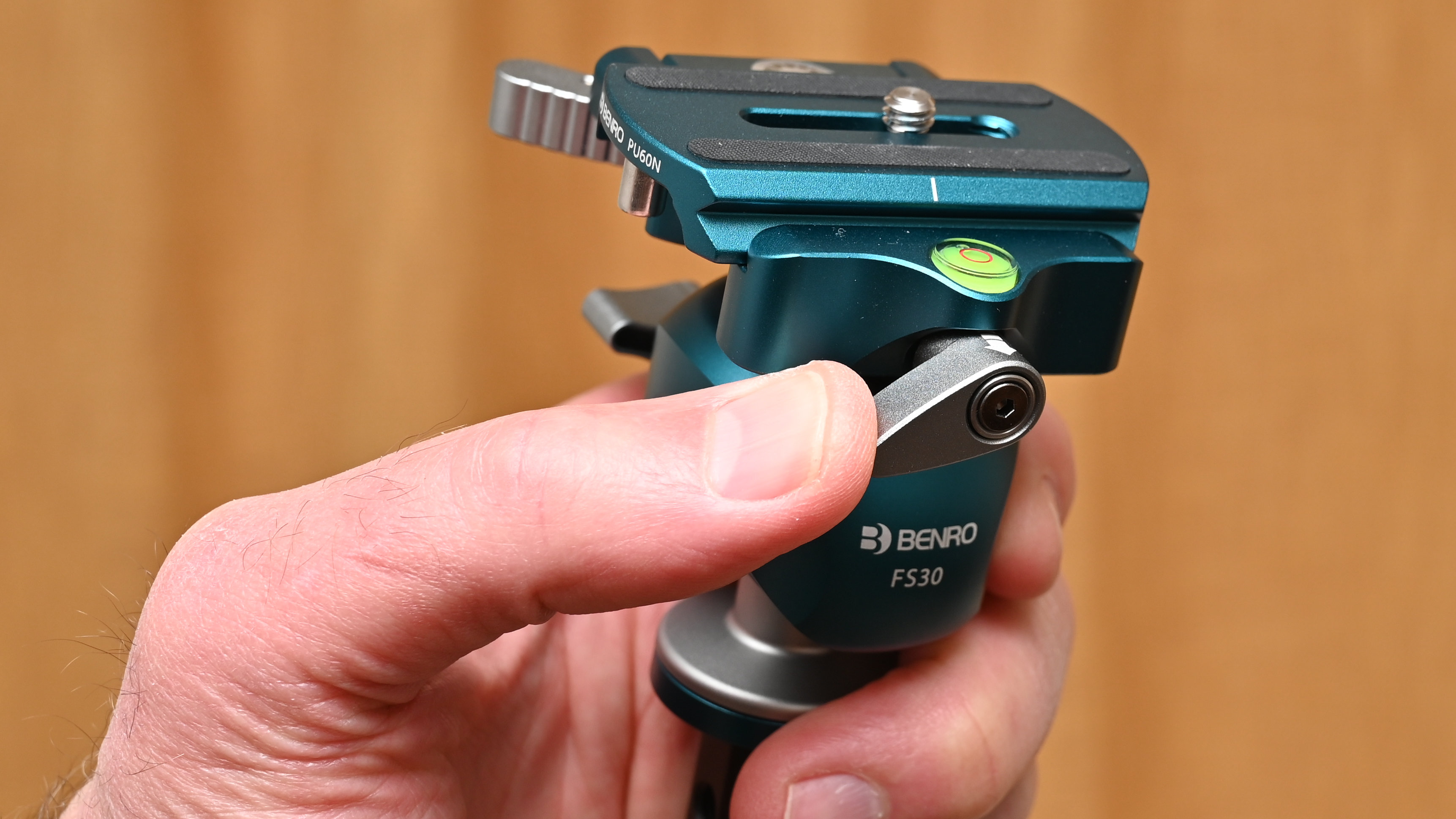
Benro Cyanbird FS30: Performance
I often feel an important ‘performance’ criteria for any travel tripod is that it’s small, light and easy to live with, so that I’ll be more inclined to actually take it on the journey and have it to hand when I need it. The Cyanbird certainly ticks those boxes. Not only is it particularly compact and lightweight, but it’s very quick to set up. 5-section legs can be a palaver but in this case, it’s easy to grab all the locking levers for each leg in one hand and undo them with a single gesture.
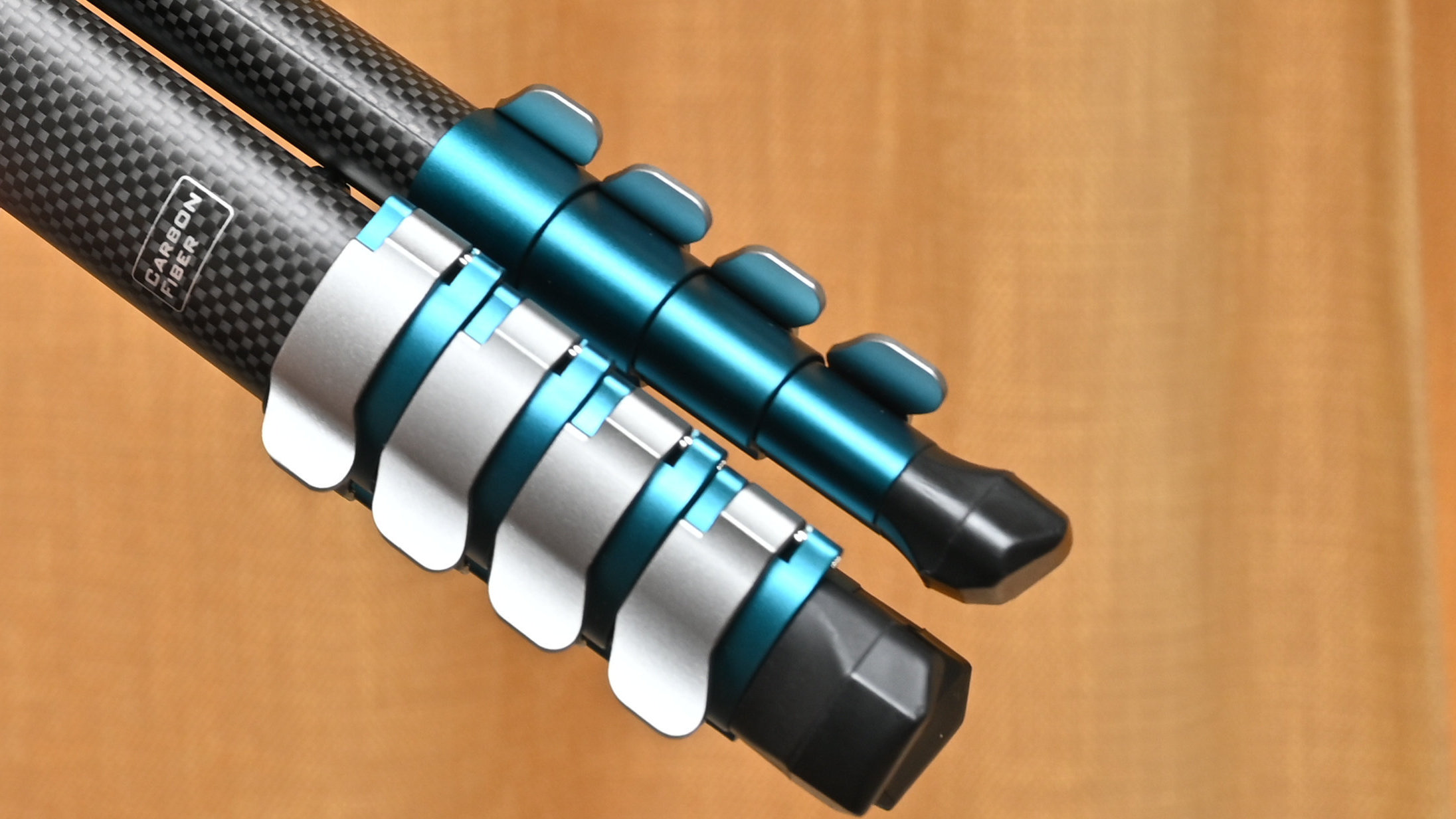
The maximum operating height of 150cm / 59" isn’t overly generous but should suffice in the vast majority of shooting scenarios. What’s more important for me is that it offers solid support, even at its loftiest height, which is a tall order for a tripod weighing just a kilogram or a couple of pounds. The Cyanbird really impresses me in this respect. Not only does it feel sturdy and stable, but it’s very resistant to vibration. I’ve often found that I can give a sharp tap to a leg of a fully extended tripod when it’s on a hard floor and oscillations in the legs continue for a few seconds. I tried the same mean trick on the Cyanbird and subsequent vibrations died away immediately.
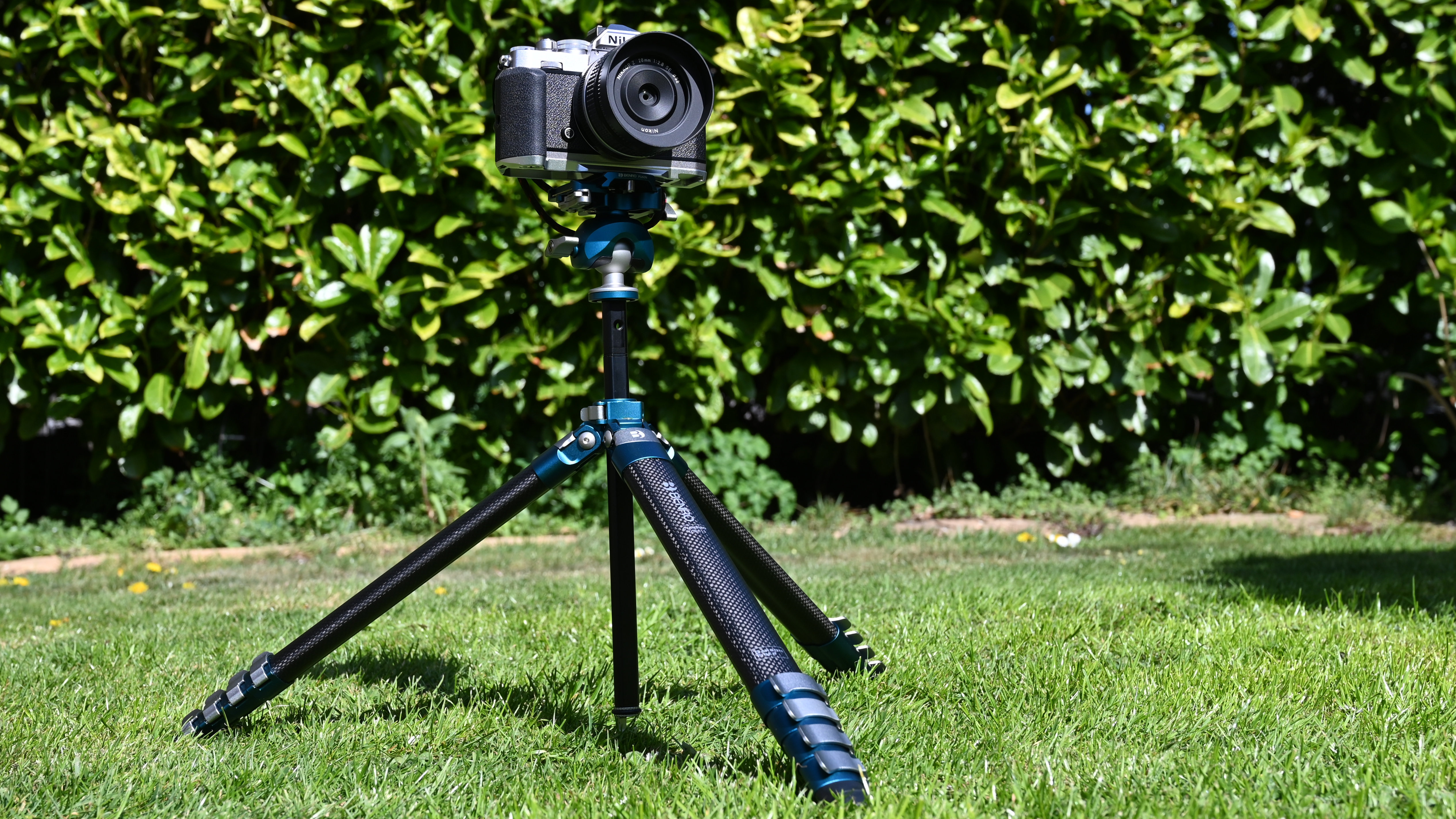
The mechanism for switching between the three leg angles is again quick and easy to use. Wider angles improve stability for low-level shooting and the splitable center column really does enable ultra-low-level shooting. You can also invert the center column and shoot with the camera upside down, right down to ground level. Up on top, the head works a treat, both as a regular ball head with effortless adjustments, and as a panning head. The fact that the panning mechanism is at the top of the ball head rather than at its base makes a big difference to the speed and ease of setting everything up for panning, especially when it comes to shooting video or taking a sequence of shots for stitching into a panorama.
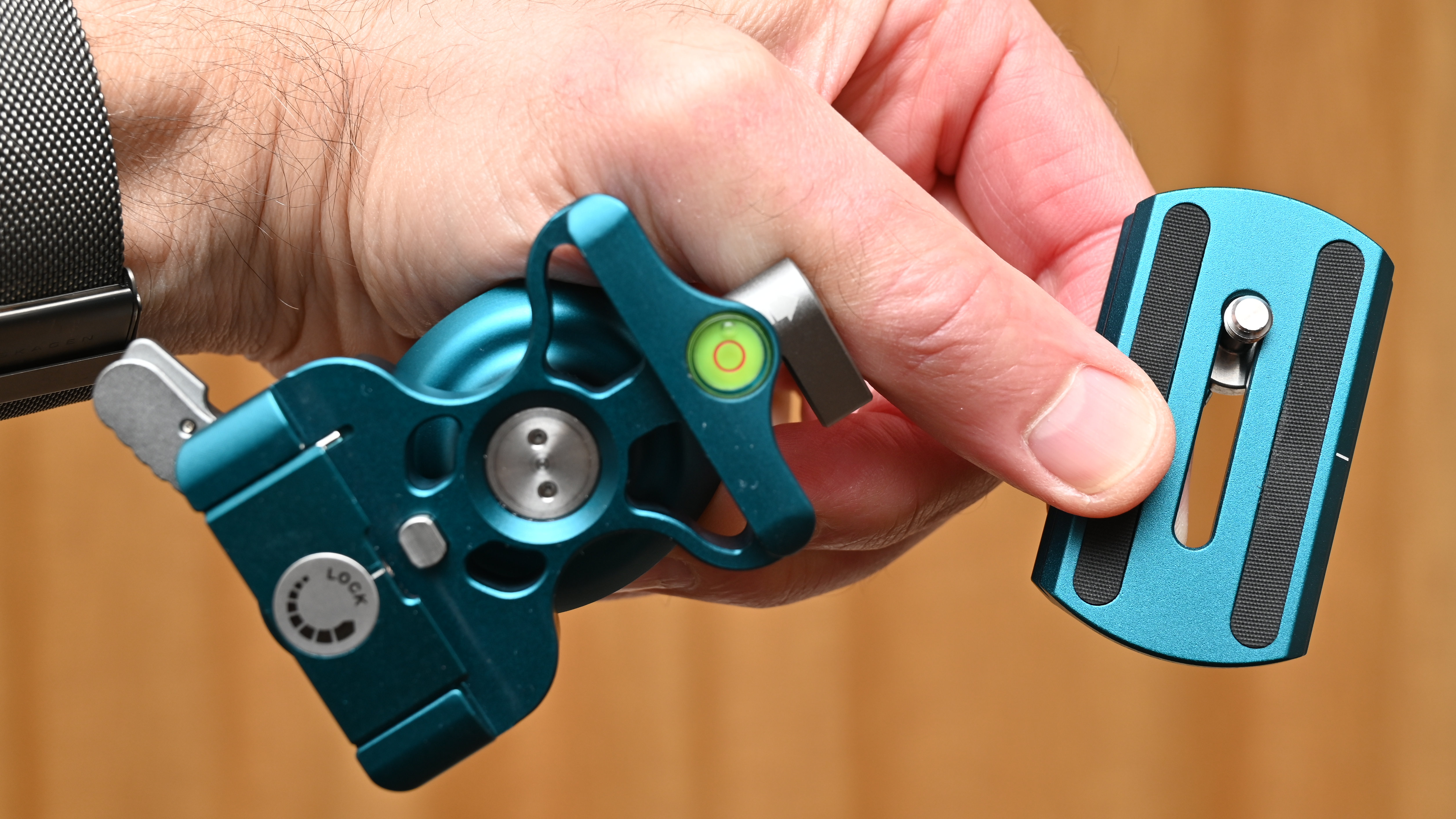
Benro Cyanbird FS30: Verdict
Compared with most travel tripods these days that have swing-up legs, I like that the Benro Cyanbird is so quick and easy to set up and fold down again. The curved profile of its legs ensure a snug fit to the triangular center column, so there’s no waste of space. The full carbon fiber construction and ocean blue magnesium alloy castings, color matched to the excellent ball head, make for an exciting, eye-catching design. And when it comes to performance, the tripod kit is as good as it looks. It’s pretty pricey to buy but well worth the outlay. Good work, Benro!
Features | The legs and head of this tripod kit are both packed with clever features that are well implemented. | ★★★★★ |
Design | Bucking the trend of swing-up legs for travel tripods, it’s a smart design that makes for quick and easy use. | ★★★★★ |
Performance | Despite being compact and lightweight, the tripod is very rigid, stable and resistant to vibration. | ★★★★★ |
Value | The fully carbon fiber kit is rather pricier than the ‘hybrid’ carbon and aluminum version, but that’s to be expected. | ★★★★ |
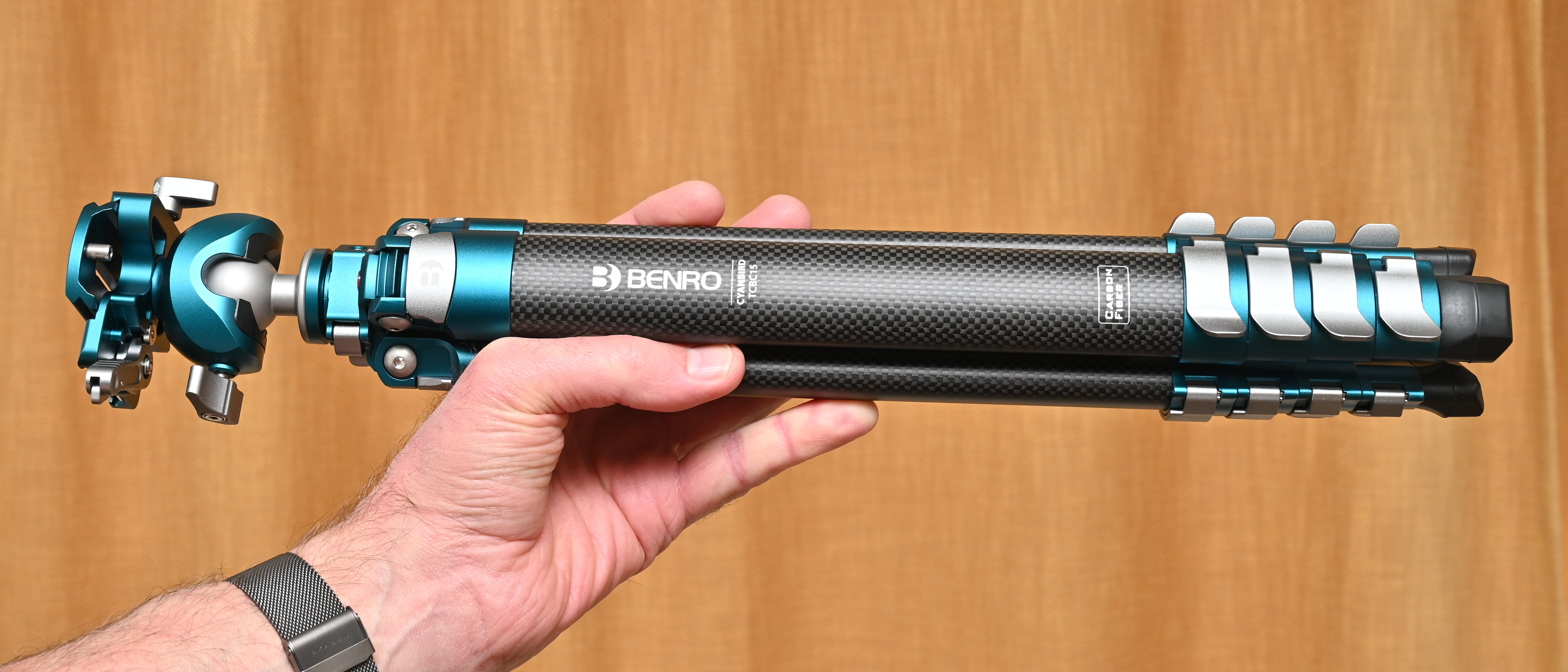
Alternatives
The carbon fiber version of the Peak Design Travel Tripod kit is particularly pricey at around $599 / £599 / AU$1,170. It weighs 1.27kg / 2.8lbs and has a maximum load rating of 9.07kg / 20lbs. The folded length is 39.4cm / 15.5" and it stretches to a maximum operating height of 152.4cm / 60".
The 3 Legged Thing Punks Corey 2.0 has a magnesium alloy build, weighs 1.78kg / 3.92lbs and has a hefty load rating of 14kg / 30lbs. With five sections in its legs and two in the center column, it shrinks to just 36.1cm / 14.2" when folded and has a maximum operating height of 146cm / 57.4". It costs around $199 / £169 / AU$412.
Matthew Richards is a photographer and journalist who has spent years using and reviewing all manner of photo gear. He is Digital Camera World's principal lens reviewer – and has tested more primes and zooms than most people have had hot dinners!
His expertise with equipment doesn’t end there, though. He is also an encyclopedia when it comes to all manner of cameras, camera holsters and bags, flashguns, tripods and heads, printers, papers and inks, and just about anything imaging-related.
In an earlier life he was a broadcast engineer at the BBC, as well as a former editor of PC Guide.
You must confirm your public display name before commenting
Please logout and then login again, you will then be prompted to enter your display name.

